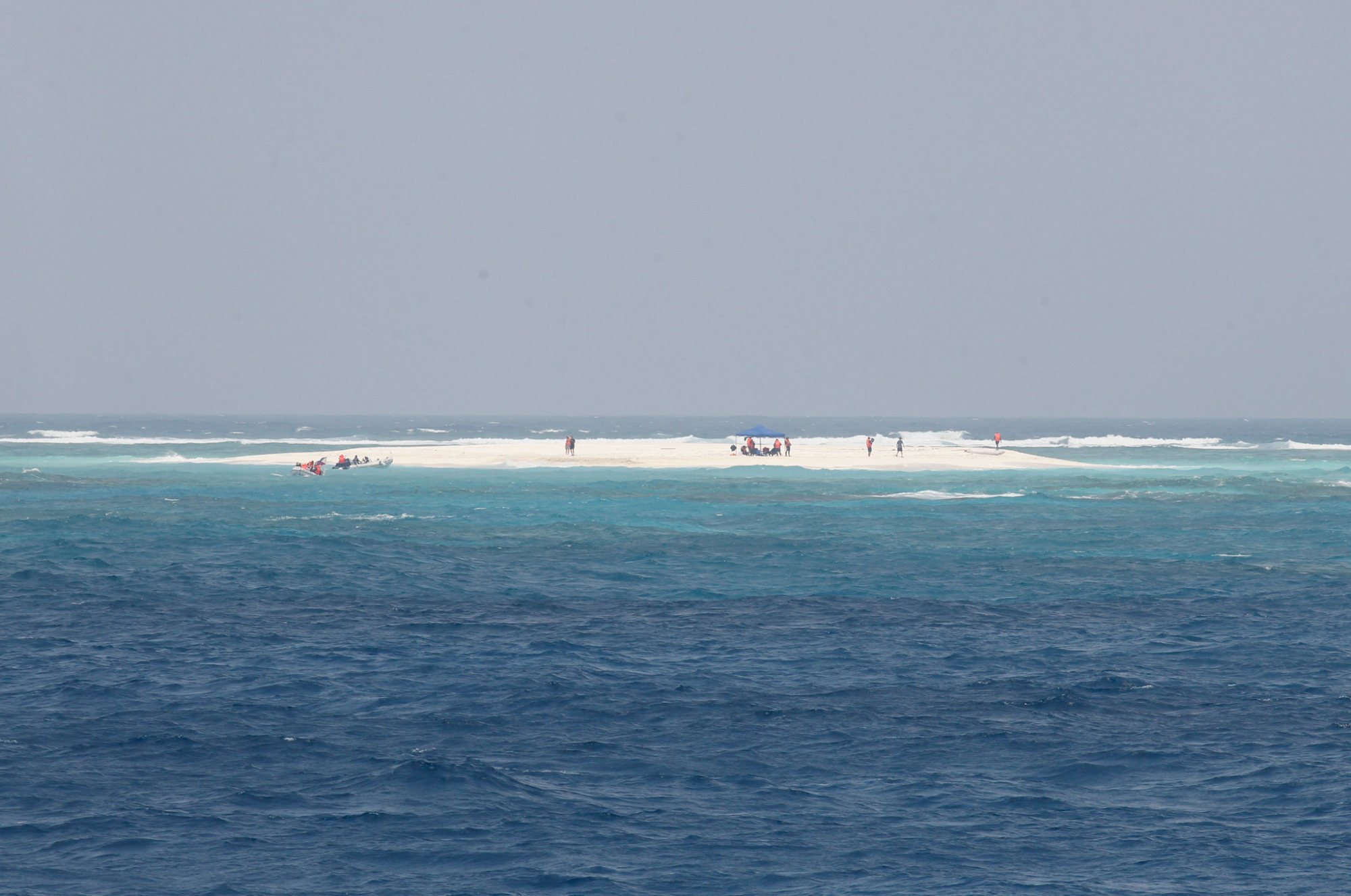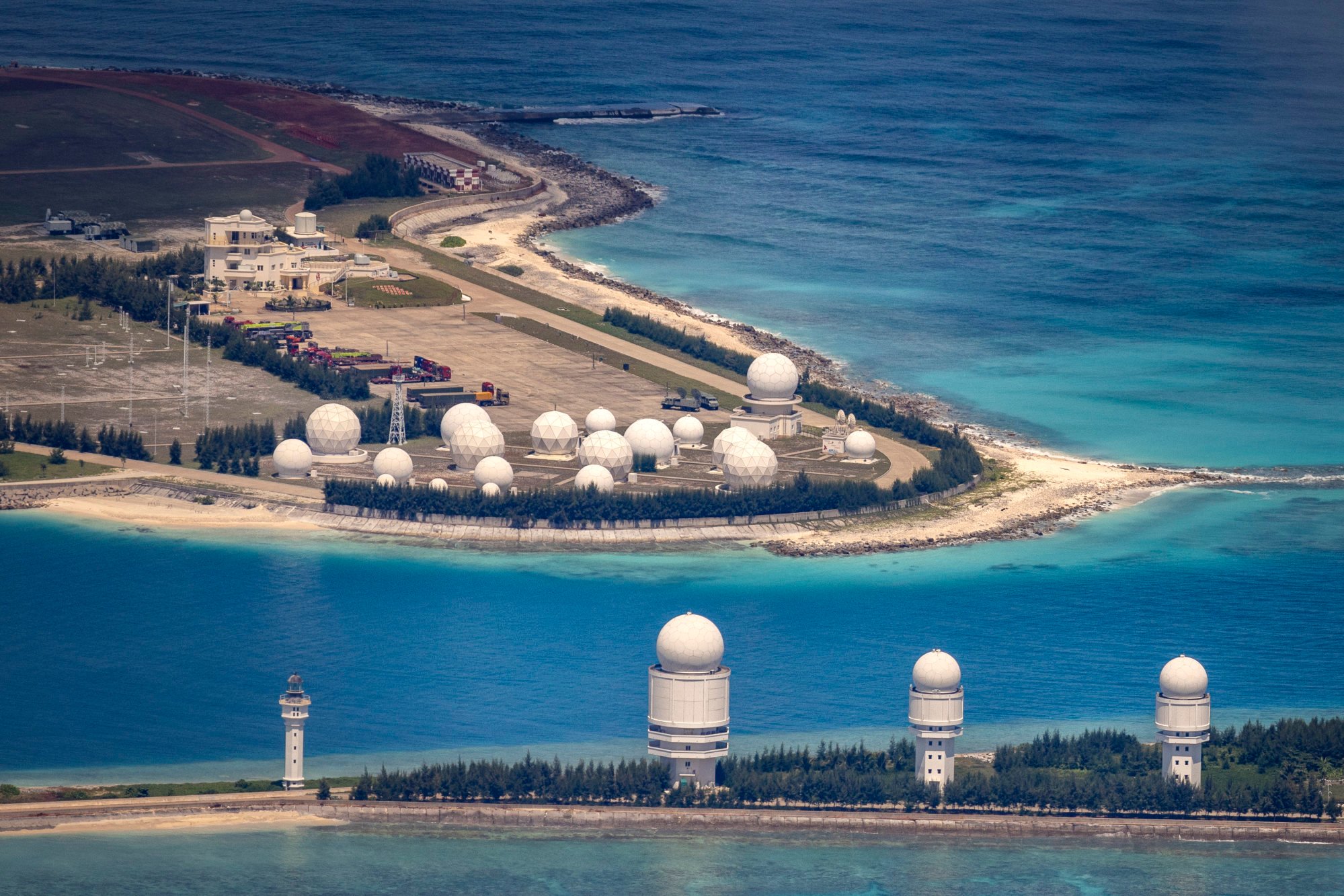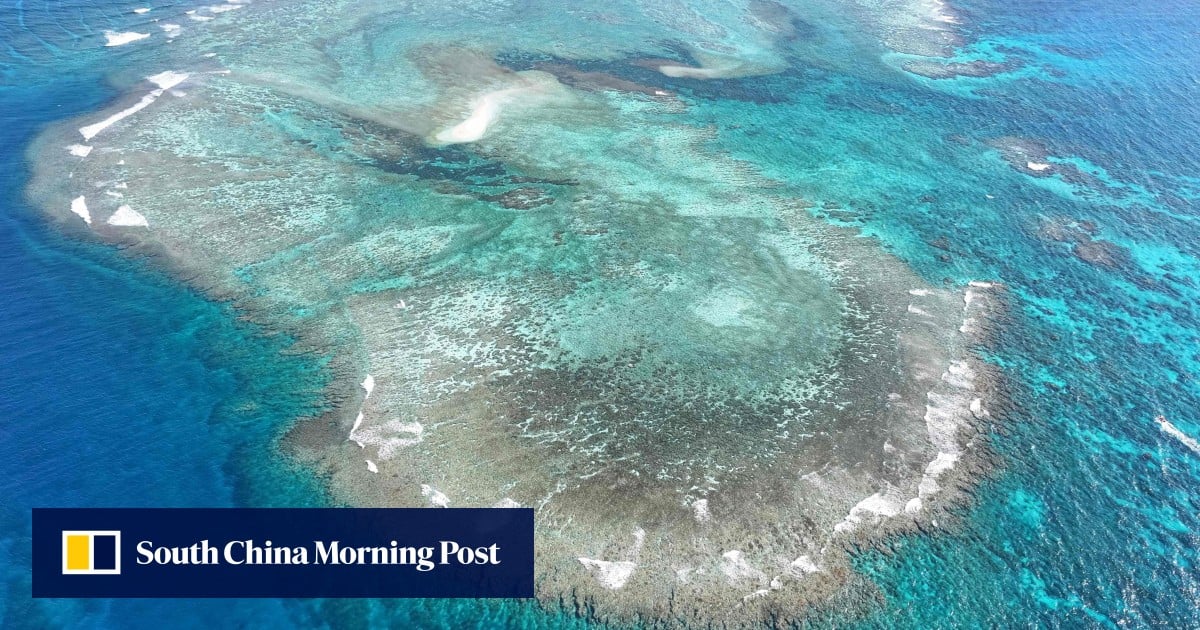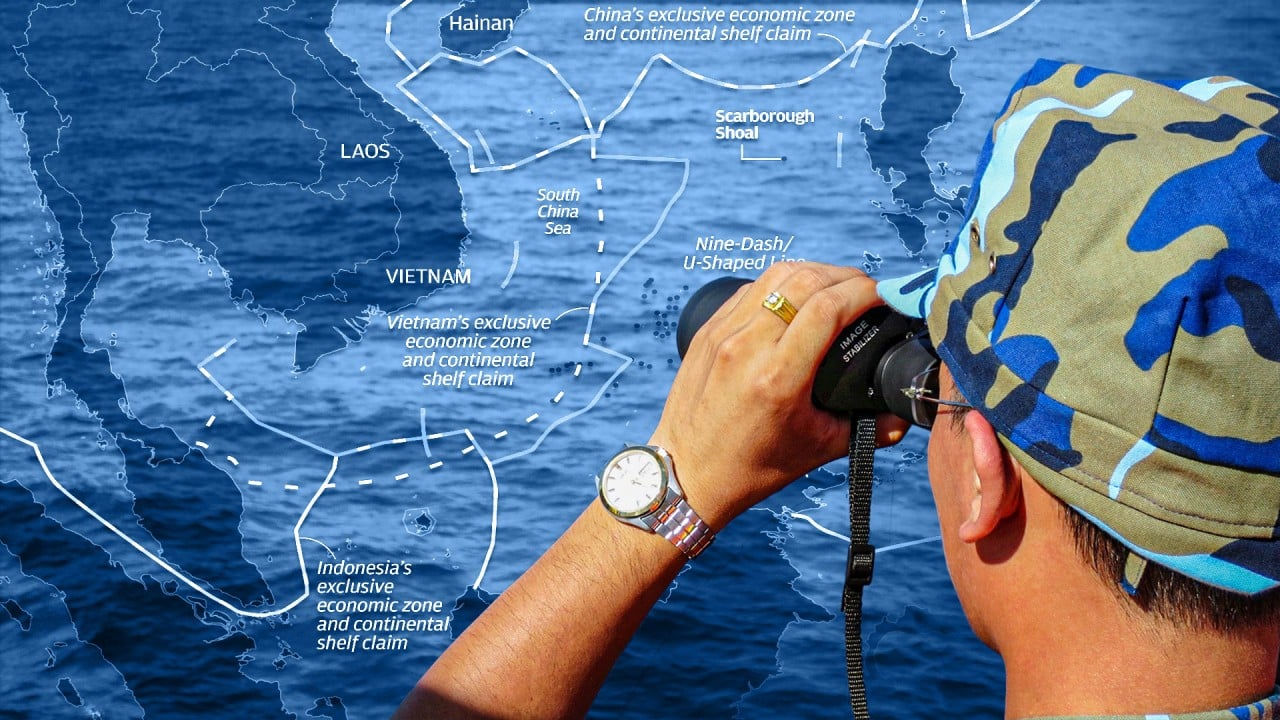“So, if there is one country that we need to hold accountable for the damage to the environment, for our coral reef … that will only be the People’s Republic of China,” Tarriela said.
“And if you are going to ask me now who is our suspect in doing illegal small island reclamation in [Pag-asa’s cays] … there’s no other country that we can pinpoint, no – it’s only the People’s Republic of China.”
Some of the countries with overlapping claims in the region, including China and Vietnam, have transformed reefs in the Spratlys into artificial islands that they have used to construct airstrips, military facilities and ports.

In March, when Anticamara’s research group was conducting its initial studies, journalists witnessed China Coast Guard and militia ships blocking and conducting dangerous manoeuvres against the research team’s vessel.
Anticamara’s group claimed at Saturday’s press briefing that coral reefs in other parts of the country were also experiencing degradation.
A report called “Deep Blue Scars: Environmental Threats to the South China Sea”, released late last year by the Asia Maritime Transparency Initiative (AMTI) of the Centre for Strategic and International Studies, found that over the last 10 years, dredging and landfill operations attributed to China had caused significant coral reef damage in the waters of the Philippines.
According to the report, from late 2013 to 2017, China’s dredging to build its artificial islands disturbed the sea floor, creating clouds of abrasive sediment that killed nearby marine life and overwhelmed the coral reefs’ capacity to repair themselves.
The report noted that the South China Sea is home to 571 of the world’s 1,683 reef-forming coral reefs and 22 per cent of 3,790 fish species.
“The results show that China has caused the most reef destruction through dredging and land fill, burying roughly 4,648 acres of reefs. AMTI estimates that approximately 16,535 acres of reef have been damaged by Chinese giant clam harvesting,” it said.
The ATMI report urged governments locked in maritime disputes in the South China Sea to give equal attention to the rapid degradation of the region’s marine environment.
“The damage has been directly caused by human activity that is allowed, supported, and initiated by coastal states. Therefore, coastal states must also be at the centre of efforts to stop destructive practices and safeguard marine ecosystems before it is too late,” the study said.
“China has played the largest role, destroying or severely damaging at least 21,183 acres of coral reef – and likely much more – through island expansion and giant clam harvesting. It also dominates the industrialised overfishing that has devastated South China Sea fish stocks.”
Last month, the Chinese embassy in Manila asserted its sovereign rights over Pag-asa Island, which it refers to as Zhongye Dao, and accused the Philippines of “illegally occupying” the area.

Jay Batongbacal, director of the University of the Philippines Institute for Maritime Affairs and Law of the Sea, said China’s reclamation activities since 2014, and the swarming of its maritime militia vessels that started in 2017, were the biggest causes of maritime environmental destruction.
“So, we can see the lingering effects of the damage. Their maritime militia vessels anchoring in fish habitats are causing damage too,” he told This Week in Asia.
Regarding the long-term environmental impact, Batongbacal said the recovery of coral reefs would take years or possibly decades if the destructive activities continued. “If the reefs can’t recover and the accumulation of damage continues, it will get worse.”
Batongbacal also said the damage would have serious economic implications, with about 27 per cent of the Philippines’ supply of fish coming from the contested waters.
“If they are destroying the habitats that allow the fish to regenerate, then over the long term, the value they contributed to the national economy and food security will be gone,” he said.

In September, Philippine senator Risa Hontiveros said China should be held accountable for the massive coral harvesting in the West Philippine Sea and filed a resolution calling on the government to seek payment from Beijing for the environmental damage.
The West Philippine Sea is Manila’s term for the section of the South China Sea that defines its maritime territory and includes its exclusive economic zone.
“We will get billions if China is forced to pay. They are robbing our fishermen of their livelihood, they are even destroying our natural resources. If China can pay off all its debts to the Philippines, it will definitely help with the economic crisis we are facing,” she said.
Hontiveros cited estimates that the Philippines was losing about 33.1 billion Philippine pesos (US$577 million) annually due to coral reef damage caused by China’s reclamation activities.
“We have a right to demand payment,” she said.


